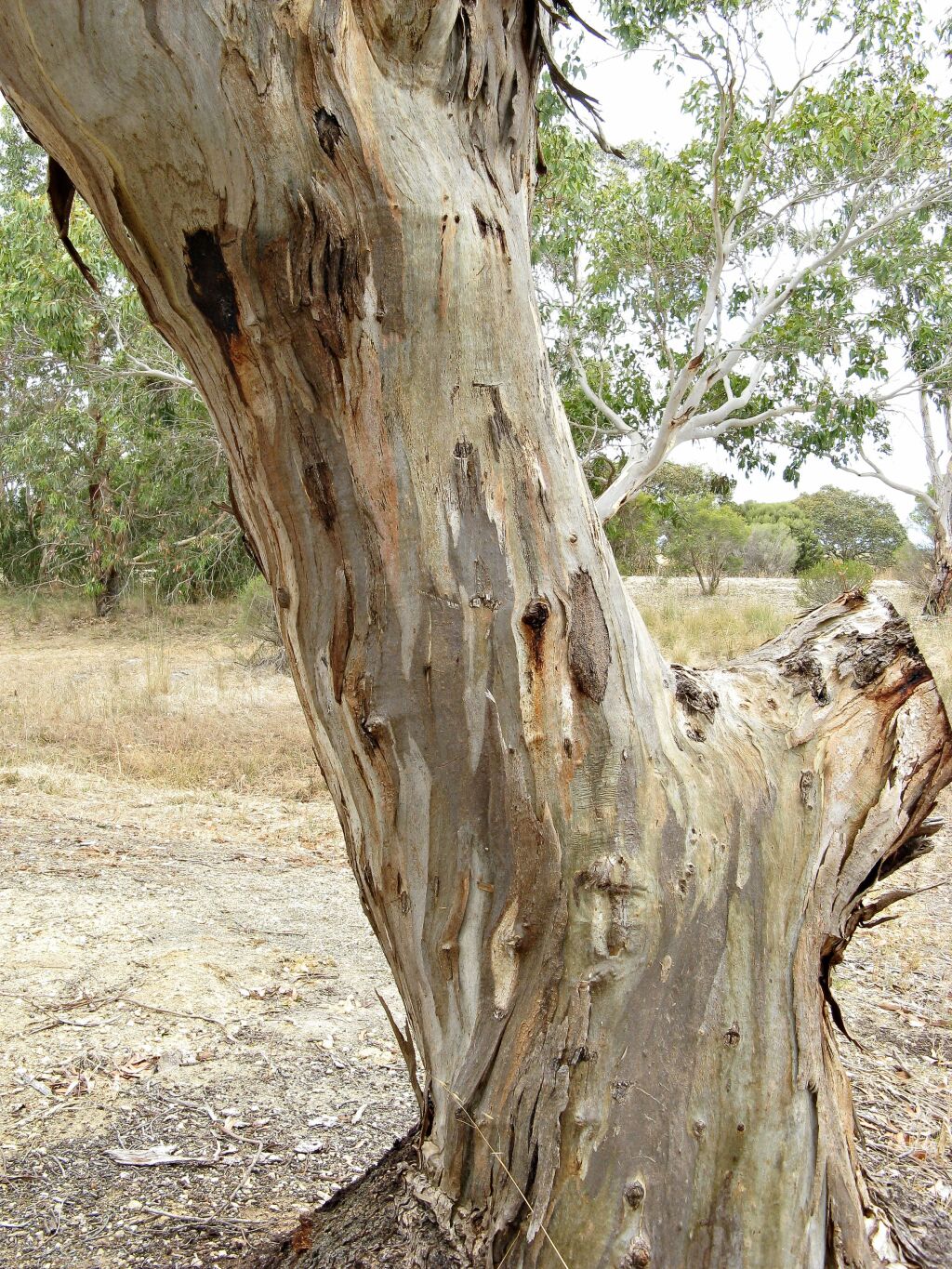Eucalyptus leucoxylon subsp. pruinosa
(F.Muell. ex Miq.) BolandMallee or tree to 25 m tall. Surface wax present on juvenile leaves, buds and fruits. Juvenile leaves to 8 cm long, 7.5 cm wide, pairs often connate, persisting sometimes in the mature tree; adult leaves to 20 cm long, 2.5 cm wide; buds globular. Flowers white; ovules in 4 vertical rows. Fruit to 0.9 cm long, 1.4 cm diam.; valves 6(7); pedicel shorter than or as long as fruit. Flowers May–Dec.
LoM, MuM, Wim, GleP, VVP, VRiv, GipP, Gold, CVU, GGr, DunT, HSF. Also SA. Occurs from Jeparit and Warracknabeal east to Rushworth and Heathcote, extending south to Plenty Gorge Park, and Greensborough (north-east suburb of Melbourne). Also in the country around Dergholm and Langkoop and in Little Desert.
A tree of the relatively well-watered country of central and western Victoria, Plenty Gorge Park and Greensborough, often on deep soil, but also on stony hills. As a tall tree it can have a superficial similarity to E. camaldulensis but can be told at a glance by its yellower smooth bark and the presence of glaucous leaves in the crown and/or from roadside coppice and seedlings.
Brooker & Slee (1996) treated E. leucoxylon subsp. connata as a non-glaucous form of E. leucoxylon subsp. pruinosa, the two taxa being linked by the connate juvenile leaves. E. leucoxylon subsp. connata can be distinguished from E. leucoxylon subsp. pruinosa by the absence of wax. A third subspecies with connate juvenile leaves has since been described from the Bellarine Penninsula. See note under E. leucoxylon subsp. bellarinensis.
Brooker, M.I.H.; Slee, A.V. (1996). Eucalyptus. In: Walsh, N.G.; Entwisle, T.J., Flora of Victoria Vol. 3, Dicotyledons Winteraceae to Myrtaceae, pp. 946–1009. Inkata Press, Melbourne.
 Spinning
Spinning


